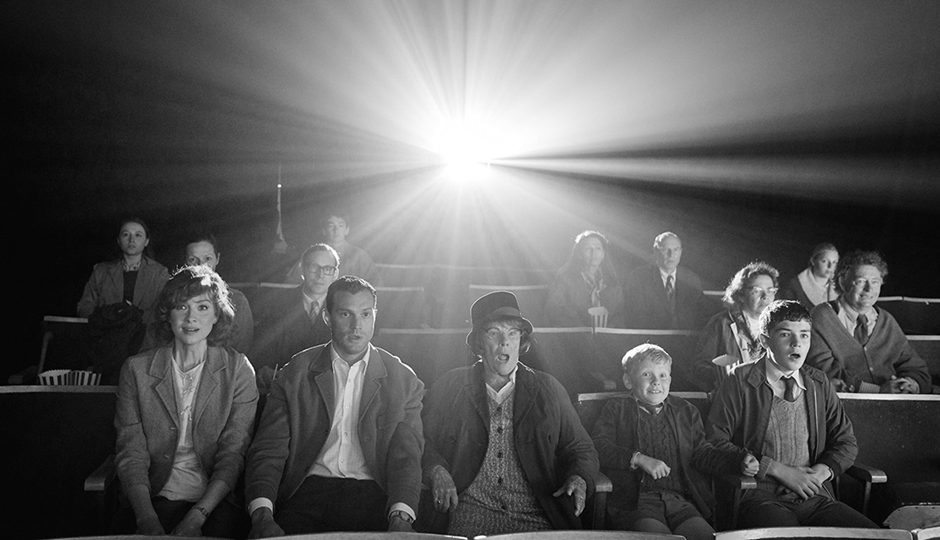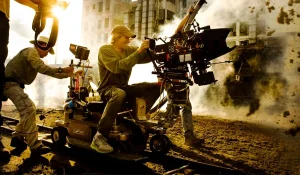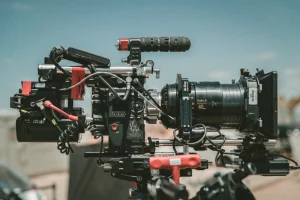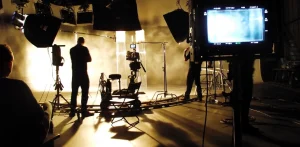Who would have thought the journey of cinema, which is so exciting now, started with a silent screen? Yes, seriously! Back in the early 1900s, watching a movie with no sound, no dialogue, not even sound effects was totally normal. For over 30 years, films only relied on moving images, actors’ expressions, and text that appeared between scenes to tell the story.
But from there began the long journey of world cinema—starting with only images and expressions, until it could “speak” and make us feel like we were talking directly with the characters on screen. Next, we’ll see the details of this journey!
1. Silent Theaters: The Quiet Start of Cinema’s Journey (1895–1926)

From the late 1800s to the 1920s, films had no recorded sound. But don’t think theaters were quiet. Actually, every screening was accompanied by live music. There were pianists, organists, even full orchestras playing while the film ran. The story was shown through images, expressions, and text that popped up between scenes. Movies like The Kid (1921) and Metropolis (1927) are proof of the beauty of visual storytelling in the early days of the journey of cinema. Even without sound, these films could still make audiences laugh, cry, or feel moved. But inventors didn’t stop there. They kept experimenting and opening the way for a new chapter in cinema history.
2. Sound-on-Disc: The First Step Toward “Speaking” Cinema

Moving into a new phase, the sound-on-disc technology was tried. In this system, audio was recorded onto a vinyl record and played at the same time as the film. But the problem was, sometimes it wasn’t in sync—like watching a buffering video. Although the result was still unstable, this system became an important first step in the journey of cinema toward the sound era. One well-known technology was Vitaphone, created by Warner Bros. Even though it wasn’t perfect, it showed that sound was slowly entering the world of film.
3. The Jazz Singer (1927): The First Sound Moment That Changed Everything

October 6, 1927, is a key date in the history of the modern journey of cinema. The Jazz Singer premiered and became the first feature film with synchronized dialogue and songs. When Al Jolson said, “Wait a minute, wait a minute, you ain’t heard nothin’ yet!” the theater erupted. The audience could finally hear sound from the screen—not just read text or guess from expressions. This was the turning point that changed everything. After that, silent films were slowly abandoned.
4. Sound-on-Film: A New Technology That Merged Sound and Image (1928)

Although Vitaphone was a promising start, the sound-on-disc system was still very complicated for large-scale production. Imagine, sound and film played separately—if they went out of sync by a bit, the character’s voice could be a few seconds behind. Then came a much more practical technology: sound-on-film. In this system, sound was recorded directly on the film strip as an optical wave. So when the film played, the projector would read the sound right from the film.
One of the first to use this system was Movietone, made by Fox Film Corporation. Because sound and image were already combined on one roll, the synchronization problem was solved! No wonder theaters quickly switched to this technology—it was easier and the result was more consistent. Starting in 1928, big studios competed to make fully sound films. The film world became more alive and exciting—truly making the world of cinema roar.
5. Challenges Behind the Camera: Changes That Made Hearts Race

The journey to sound films wasn’t only about technology, but also about adaptation. Many silent film actors lost their fame because their voices didn’t fit. Directors and crew had to learn a new way of working—everything from microphones, dialogue, to camera techniques. Cameras that once moved freely now had to stay still because their motors were too loud. But humans are resourceful. New tools like boom mics, dubbing techniques, and more appeared, making everything feel more flexible again.
6. A New Era of Cinema: Sound as a Story Weapon

By the early 1930s, sound films were so common—they were like a requirement in the film world. New genres started to appear, one of the most popular being the musical. They didn’t just have singing, but were full of drama and stories that became more exciting because of sound. Dialogue became the “main weapon” to tell a story. No longer relying only on expressions or text on screen, stories were delivered directly through words that made the audience’s emotions feel stronger. Sound really gave films a different “feel”—something that images alone couldn’t replace.
An example? Look at All Quiet on the Western Front (1930), a war film that makes hearts ache because of the sounds on the battlefield. Then there’s City Lights (1931) by Charlie Chaplin, which mostly stayed silent but knew how to use sound in key moments to hit hard. Both films prove that modern cinema has many faces—some are loud with sound, others are quiet but still impactful.
Now, Screens Are Not Just Seen, But Also Heard
The journey of cinema from being silent to being sound-filled like it is now wasn’t instant. It was full of trial and error, challenges, and even failures. But all of that shaped the world of movies we enjoy today—full of sound, dialogue, music, and emotion.
So, next time you watch a movie and get carried away by the dialogue or background music, remember: it’s all the result of the long journey of cinema that never stops evolving. And one thing is sure: since the first sound was heard from the white screen, cinema has never been silent again.
Read more cinema history here.




